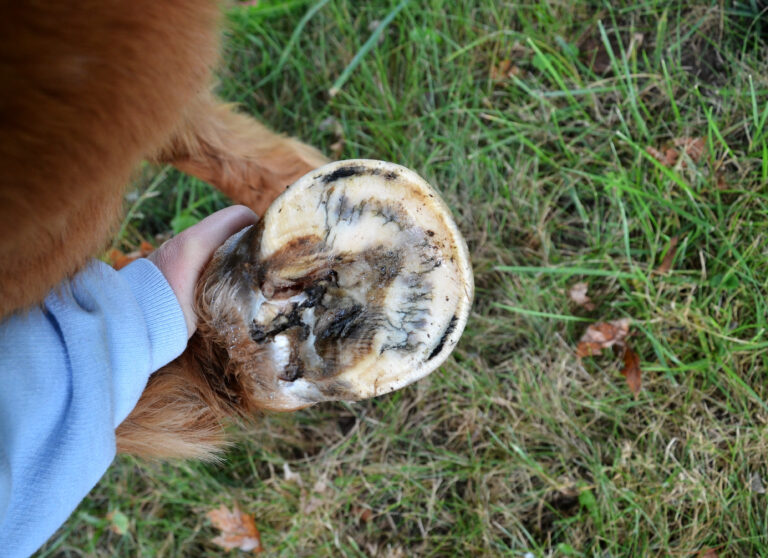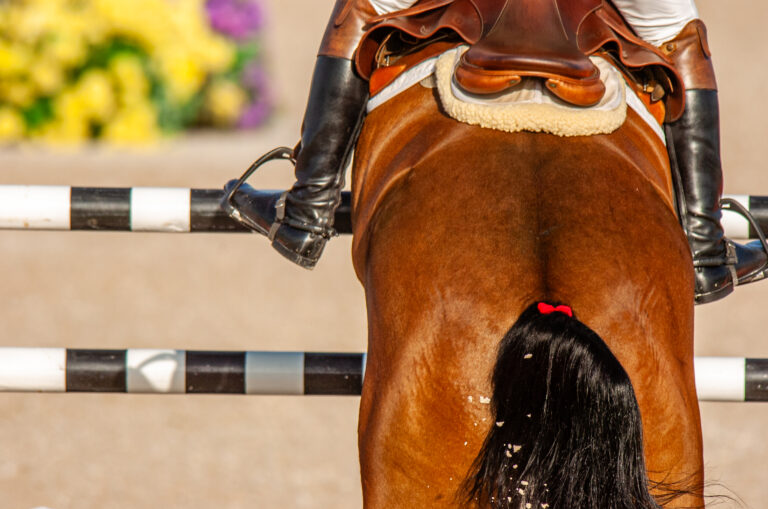People have personalities. Do horses have “horsenalities”? Clinician/educators Linda and Pat Parelli say, absolutely.

Pat, a pioneer in the field of natural horsemanship, has always connected intuitively with a horse’s inner character as part of “reading” that animal.
Linda, who studied human personality theory in the 1980s under Australian researcher Glynn Braddy, has now adapted his personality model for use with horses. The goal is to enable average horse owners to gain a fuller understanding of their own animals a shortcut of sorts to the intuitive connection that experienced horsemen automatically make.
The Parelli Horsenality Model makes use of a chart with which an owner plots a horse’s unique characteristics and behaviors (see “How Does Your Horse Type Out,” below). By interpreting the completed chart, you learn whether your horse tends to be an introvert or an extrovert, and whether he’s right-brain (fear) or left-brain (dominance) oriented.
This information, in turn, provides valuable insights into how best to approach, handle, train, and bond with that horse.
From the Parelli Ranch in Pagosa Springs, Colorado, Linda recently spoke with H&R to tell us more about her groundbreaking work.
H&R: What does it mean for a horse to be introverted or extroverted, or right- or left-brained?
LINDA: Extroverted horses are like extroverted people, energetic and active. Their feet move a lot. Introverted horses tend to have lower energy and to be quieter by nature. Extroverts have more “go.” Introverts have more “whoa.”
Right-brained horses tend to be fearful and defensive, while left-brained ones are more confident and dominant. Right-brained horses are generally spookier; left-brained ones are generally pushier.
In simplest terms, the four basic categories of horsenality are:
- right-brained extrovert (high fear/ high energy);
- right-brained introvert (high fear/low energy);
- left-brained introvert (high dominance/low energy); and
- left-brained extrovert (high dominance/high energy).
H&R: Why go to the bother of plotting all this out?after all, horses will always be horses, right? Don’t we already know enough about their prey-species mentality to know how best to deal with them?

LINDA: Most people are unaware of just how different horses can be from each other, yet we’re quick to blame them for what we think are behavioral issues or vices. For example, we’ll say he’s just lazy, or she’s crazy. He’s stubborn, she’s unfocused, whatever.
But the most important thing is that each horsenality responds to stress in a different way a right-brained extrovert, for example, will get panicky and tend to “go.” A left-brained introvert, by contrast, will tend to get balky and defiant. You can see some of the other differences by looking at the chart. Knowing all this helps you figure out the best way to approach your horse, given his horsenality.
What’s interesting is that people who’re talented with horses often know intuitively how to modify their approach to accommodate different horsenalities; they may not even be aware they’re doing it. Often they discover they get along with a particular kind of horse better than others because their own personality matches with that particular horsenality.
Our goal is to help the average horse owner learn to get along better with every type of horsenality. When you know what makes this horse or that horse “tick,” you hold the key to unlocking the heart of every horse you come into contact with.
And the horses appreciate this so much. “She really gets me!”
H&R: Isn’t there a danger of anthropomorphizing horses by considering horsenalities? Don’t we just project our own preferences or preconceived notions onto them?
LINDA: Yes and no. The anthropomorphic part is when people are wrong about the cause of a horse’s feeling, rather than the actual feeling. For example, your horse might be dreadful on trail rides?hot-headed, won’t walk, jigs and jogs, wants to bolt. You might think it’s because he’s competitive and wants to be at the front, but that’s using a human rationale. Equine behavior is based on a prey-animal rationale, which is all about survival.
This extreme nervousness on the trail would be classic right-brained extrovert behavior, and it’s entirely fear-based. Once you realize that, you’ll understand that holding the horse back and punishing him are the worst things you could do. You need to calm and reassure him, instead. The horsenality model helps you figure that out, and the more you understand horse behavior, the less anthropomorphic you become.
H&R: Can you explain a bit more about the difference between left-brained and right-brained horses?
LINDA: Right-brained horses are timid and easy to bond with. They’re natural followers, looking for a leader. If you can get them to feel safe, they come around quickly. Approach-and-retreat can work with them, but they often have problems with the approach part of it. So even better is retreat, retreat, retreat.
Imagine that you’re timid yourself, and think how it feels if someone pushes into your space. But if the person confronting you backs away instead and plays hard to get, you feel more confident.
We teach owners how to use lots of retreat with horses that have confidence issues. Rather than holding such a horse tightly (the worst thing you can do), you use a long lead rope and give him some space. The horse goes, “I get it, you’re not going to attack me.”
If a right-brained horse is afraid of something, don’t push him to go up to it. Instead, take it away, and the horse says “Hey?I want to look at that.” It’s using reverse psychology.
So you must deal with the fear issues before trying to teach a right-brained horse anything. Otherwise, if you try to train on a fearful, overexcited horse, you find yourself using a stronger bit and maybe a controlling noseband and a martingale. With all that gear, you “manage” him around the arena. You may think you’re training him something, giving him a lesson, but that horse won’t remember a thing, because fear will have been blocking everything out.
Both horses and humans have trouble learning when they’re in a defensive mode.
H&R: And the left-brained horse?
LINDA: This horse is much more self-confident, so he’s actually not looking for a leader, and in fact will challenge your leadership skills. But if you offer leadership in the right way, a left-brained horse will learn incredibly fast. He’s totally “present” and can “get” something in one or two repetitions. If you start doing 10 to 20 repetitions, however, he’ll start thinking, “Ask me that one more time, and one of us has to die! And it’s not going to be me.”
We tend to advance too slowly with these horses?we don’t give them enough to do. So the horse starts pushing us around (this will be the left-brained extrovert) or refusing to do anything (the left-brained introvert).
Left-brained horses can do very well with professional trainers, if treated kindly. If the trainer is too forceful, however, it can result in a big fight.
H&R: How do I know which horsenality type would work best for me?
LINDA: First, you need to become really good at reading horses. I can tell horsenality by watching a video of a horse, or seeing him out in his pasture. How he carries himself, how his eyes look, how he moves. I can see confident or unconfident, sometimes even in just a photograph. But I’ve been doing it a long time and have become very good at it.
So work at learning how to do this, then practice on a lot of different horses. Then think carefully about which type might work best for you.
Most people, unfortunately, tend to “pick their poison.” They’re attracted to a certain kind of horse for all the wrong reasons. And many wind up going through our horsenality program because they don’t want to sell that horse, so they need to learn how to deal with it. Ultimately it leads them on the path of becoming a better horseman, they learn how to become what that horse needs, rather than reinforcing or even creating problems in the horse.
But if you’re starting from scratch and buying a horse, you need to think whether you want an introvert or extrovert type. If you want an extrovert, you’d better be a pretty energetic person. Plus you need to be mentally agile, progressive, and confident, or a learnaholic in order to become all these things!
Because you’ll have picked a challenge for yourself.
If you’re an extrovert type yourself, you may have trouble managing your own energy working with an extroverted horse. You must be “up” when you need to be, and “down” when necessary to calm the horse. A lot of people find this difficult?they follow the horse’s energy, instead of guiding it.
As for left-brained or right-brained, do you want a more confident or unconfident horse? One that might try to bully you, or one that will need help to overcome being timid and fearful?
A right-brained introvert can be the perfect reining or dressage horse. He’s naturally obedient and looking for leadership. He loves repetition and consistency and routine.
A left-brained introvert, by contrast, hates all that. He’s easily bored, so the more you work him, if you’re not making it fun for him, the more difficult he can become, but he’s often fabulous on the trail.
We’re actually going to be launching a horse/personality matching system early next year. There’ll be an element of human personality testing, plus pinpointing what you like or don’t like when you’re around horses. Your confidence level, athletic skills, age, and so on will also be factored in.
We hope it’s going to be enormously helpful to people. One of our taglines is, “Parelli is about way more than riding.” Everyone tends to think so much about technique, when the psychology is what’s most needed with horses. True horsemanship means you’re reading your horse every moment. It’s not a train ride, where you can look out the window and take pictures! You’re with a living, breathing, reacting creature, and a prey animal at that!
Those who don’t want to bother with all that should just get a motorbike. But if you know what to do, and you develop that relationship, you can have every- thing you want with your horse. And your horse will enjoy the partnership, too.











